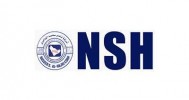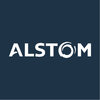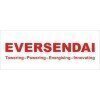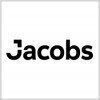Filter interviews by
Eversendai Hse Safety Engineer Interview Questions and Answers
Eversendai Hse Safety Engineer Interview Experiences
2 interviews found
I applied via Approached by Company and was interviewed in Mar 2022. There were 3 interview rounds.

(1 Question)
- Q1. Share details of your previous job.
(1 Question)
- Q1. Permits, facade work, construction work
Interview Preparation Tips
I applied via Job Portal and was interviewed in Mar 2022. There were 2 interview rounds.

(1 Question)
- Q1. Share details of your previous job.
Interview Preparation Tips
Top trending discussions






Interview questions from similar companies

(6 Questions)
- Q1. What about yourJob ?
- Q2. My job is everything provide safety
- Q3. What's your self ?
- Q4. This is my all job relationship details
- Q5. Which hieght need work at height?
- Ans.
Work at height is typically considered to be any task performed above ground level, such as on ladders, scaffolding, or roofs.
Work at height typically refers to tasks performed above ground level
Common examples include working on ladders, scaffolding, or roofs
Height requirements may vary depending on the specific job or industry
- Q6. Ground level to 1.8 mtr
- Ans.
The question is likely referring to the height range for safety measures or regulations.
This height range is commonly used in safety regulations for fall protection.
Safety measures such as guardrails or safety harnesses may be required for working at this height.
Training on proper use of safety equipment is essential for workers at this height.
Interview Preparation Tips

HSE Officer Interview Questions & Answers
Nasser S. Al Hajri Corporationposted on 11 Mar 2024
I applied via Recruitment Consulltant and was interviewed in Sep 2023. There was 1 interview round.
(1 Question)
- Q1. Mandatory PPE in electrical work
- Ans.
Mandatory PPE in electrical work includes insulated gloves, safety glasses, and hard hats.
Insulated gloves are essential to protect against electric shock.
Safety glasses protect the eyes from potential hazards like sparks or debris.
Hard hats are necessary to prevent head injuries from falling objects or electrical hazards.
Interview Preparation Tips
- Capital Goods

I applied via LinkedIn and was interviewed in May 2023. There were 5 interview rounds.

Technology development based on question
(1 Question)
- Q1. Ctc, and employees benefit, experience
(2 Questions)
- Q1. Group members discussed
- Q2. Technical questions
(2 Questions)
- Q1. Technical and over all experience, different types of work and skills cases
- Q2. Related experience
Interview Preparation Tips

Safety Officer Interview Questions & Answers
Nasser S. Al Hajri Corporationposted on 29 Aug 2022
I applied via Recruitment Consulltant and was interviewed in Jul 2022. There were 2 interview rounds.

H2s, confined space hazard and precaution, what's different b/w pre commissioning & commissioning, PSV, SWL, STEL, What's is ur pervious experience eg. Flare erection, tank erection, pre commissioning & commissioning, 11kv crude substation.
Interview Preparation Tips
- Nebosh igc

HSE Officer Interview Questions & Answers
Nasser S. Al Hajri Corporationposted on 17 Jun 2021
Interview Questionnaire
1 Question
- Q1. Precommition and commition activity realated question


(2 Questions)
- Q1. Safety related question work at height. Lifting Plan
- Q2. Log out Tag out related question
Interview Preparation Tips

Safety Officer Interview Questions & Answers
Nasser S. Al Hajri Corporationposted on 3 Dec 2024
I applied via Walk-in and was interviewed before Dec 2023. There were 2 interview rounds.
Objective types questions
(2 Questions)
- Q1. Safety management
- Q2. Safety workplace

I applied via Naukri.com and was interviewed before Apr 2023. There were 3 interview rounds.
(1 Question)
- Q1. Genral intruduction
(1 Question)
- Q1. Based on your resume
(1 Question)
- Q1. Based in your resume
Eversendai Interview FAQs
Tell us how to improve this page.
Eversendai Interviews By Designations
- Eversendai Assistant Engineer Interview Questions
- Eversendai Hse Safety Engineer Interview Questions
- Eversendai Project Manager Interview Questions
- Eversendai MEP Engineer Interview Questions
- Eversendai Structural Engineer Interview Questions
- Eversendai Junior Officer Interview Questions
- Eversendai Design Engineer Interview Questions
- Eversendai QA QC Engineer Interview Questions
- Show more
Interview Questions for Popular Designations
- Safety Officer Interview Questions
- Safety Supervisor Interview Questions
- Safety Engineer Interview Questions
- Safety Manager Interview Questions
- Drug Safety Associate Interview Questions
- Fire & Safety Officer Interview Questions
- Senior Safety Officer Interview Questions
- HSE Officer Interview Questions
- Show more
Interview Questions from Similar Companies
Fast track your campus placements
|
Assistant Engineer
58
salaries
| ₹2.3 L/yr - ₹4.6 L/yr |
|
Senior Engineer
57
salaries
| ₹5 L/yr - ₹9.5 L/yr |
|
Assistant Manager
42
salaries
| ₹6.1 L/yr - ₹16 L/yr |
|
Engineer
38
salaries
| ₹3 L/yr - ₹8 L/yr |
|
HSE Engineer
30
salaries
| ₹2.4 L/yr - ₹8 L/yr |

Alstom Transportation

Saint-Gobain

AECOM

AtkinsRealis
- Home >
- Interviews >
- Eversendai Interview Questions >
- Eversendai Hse Safety Engineer Interview Questions












